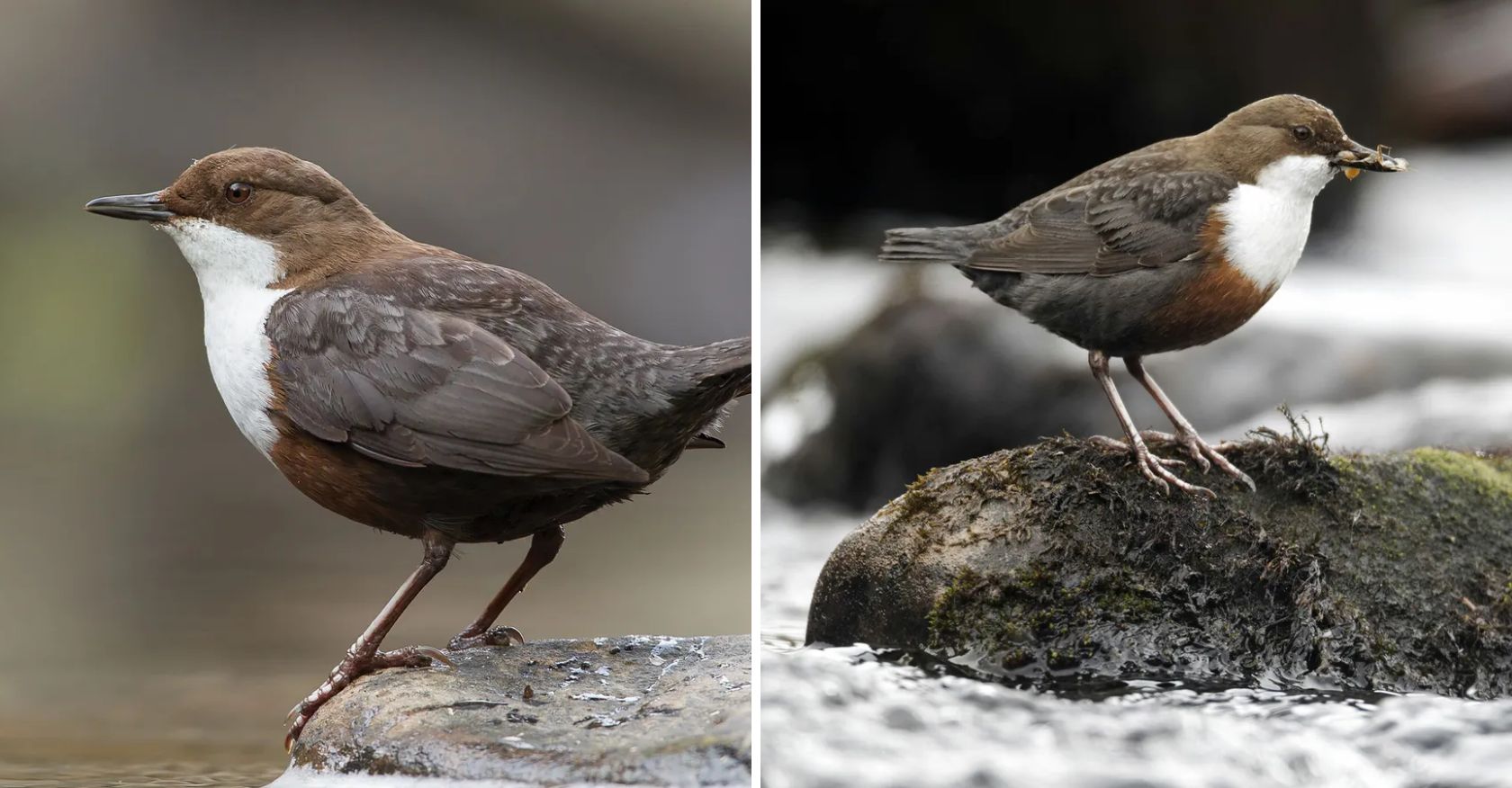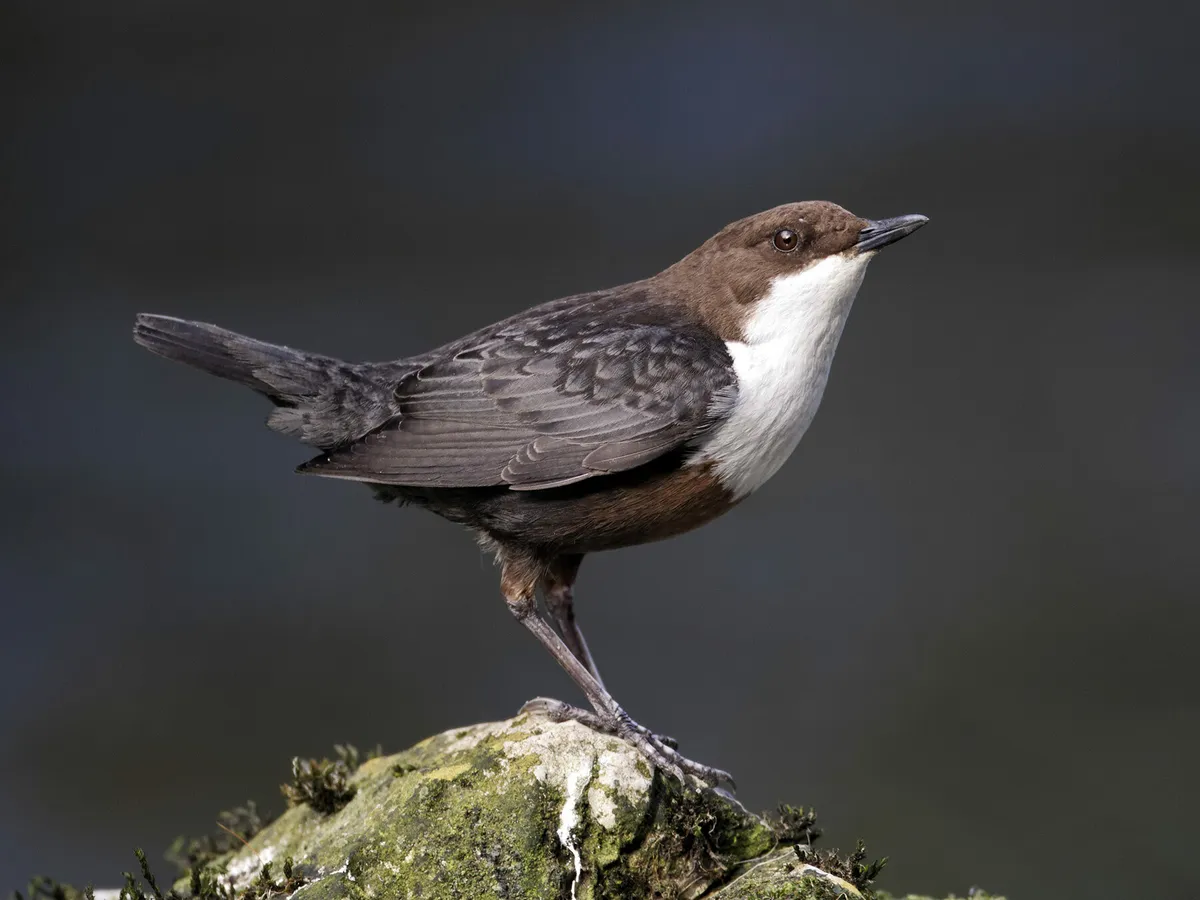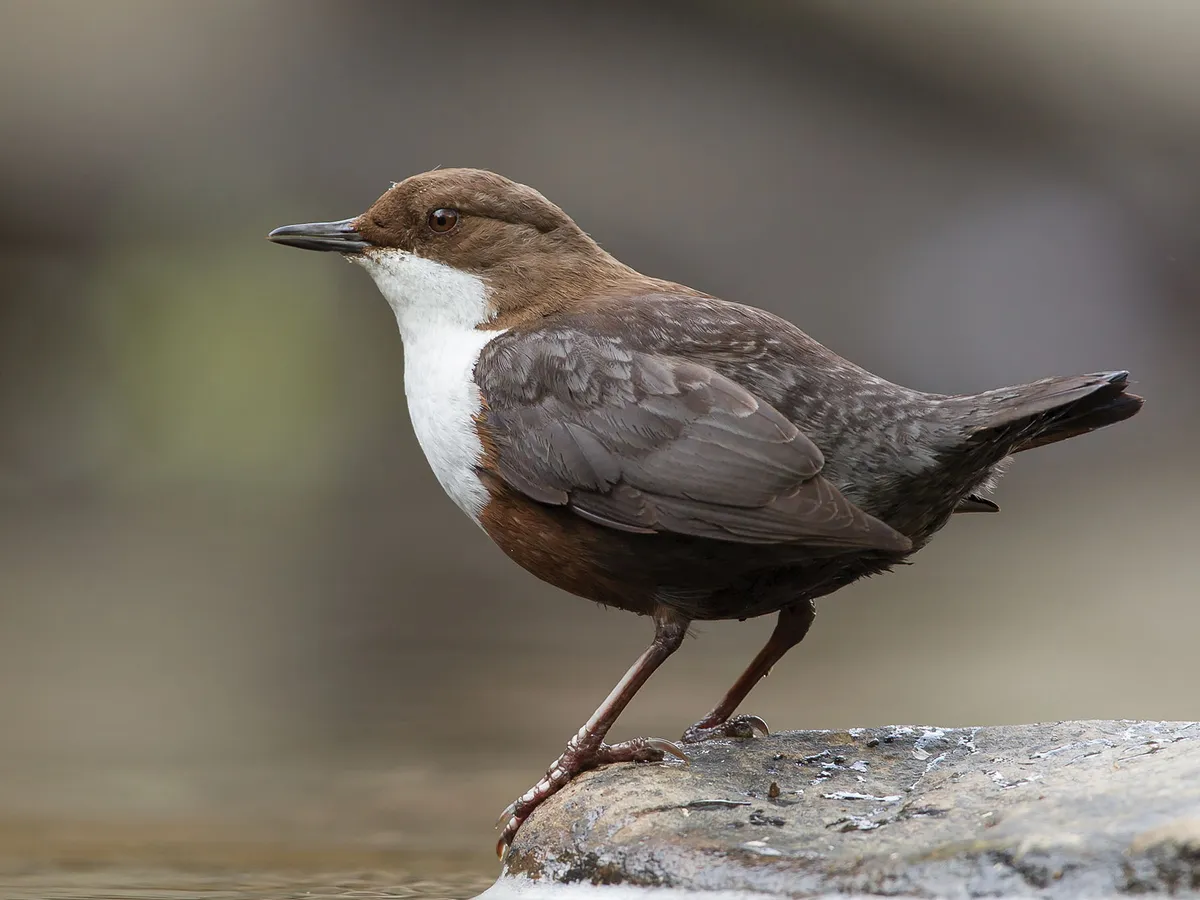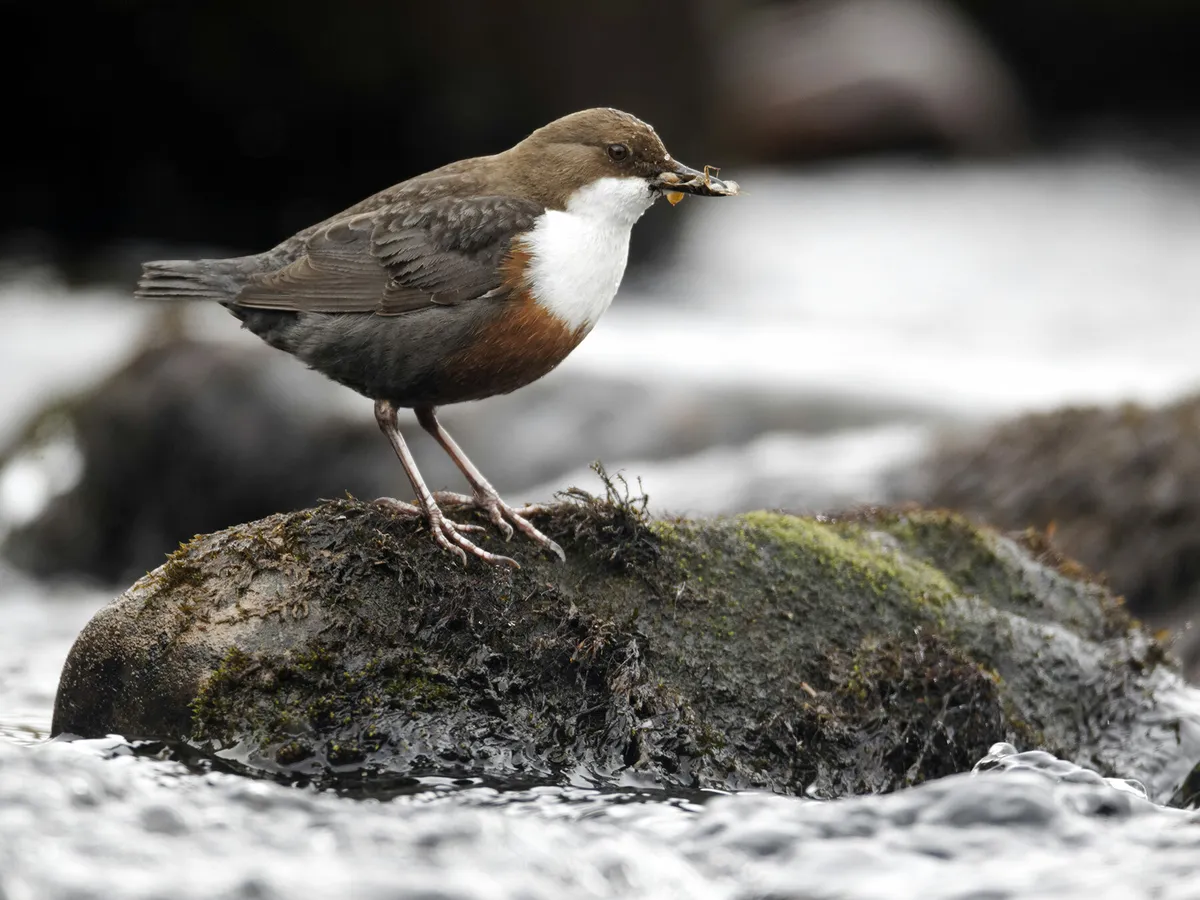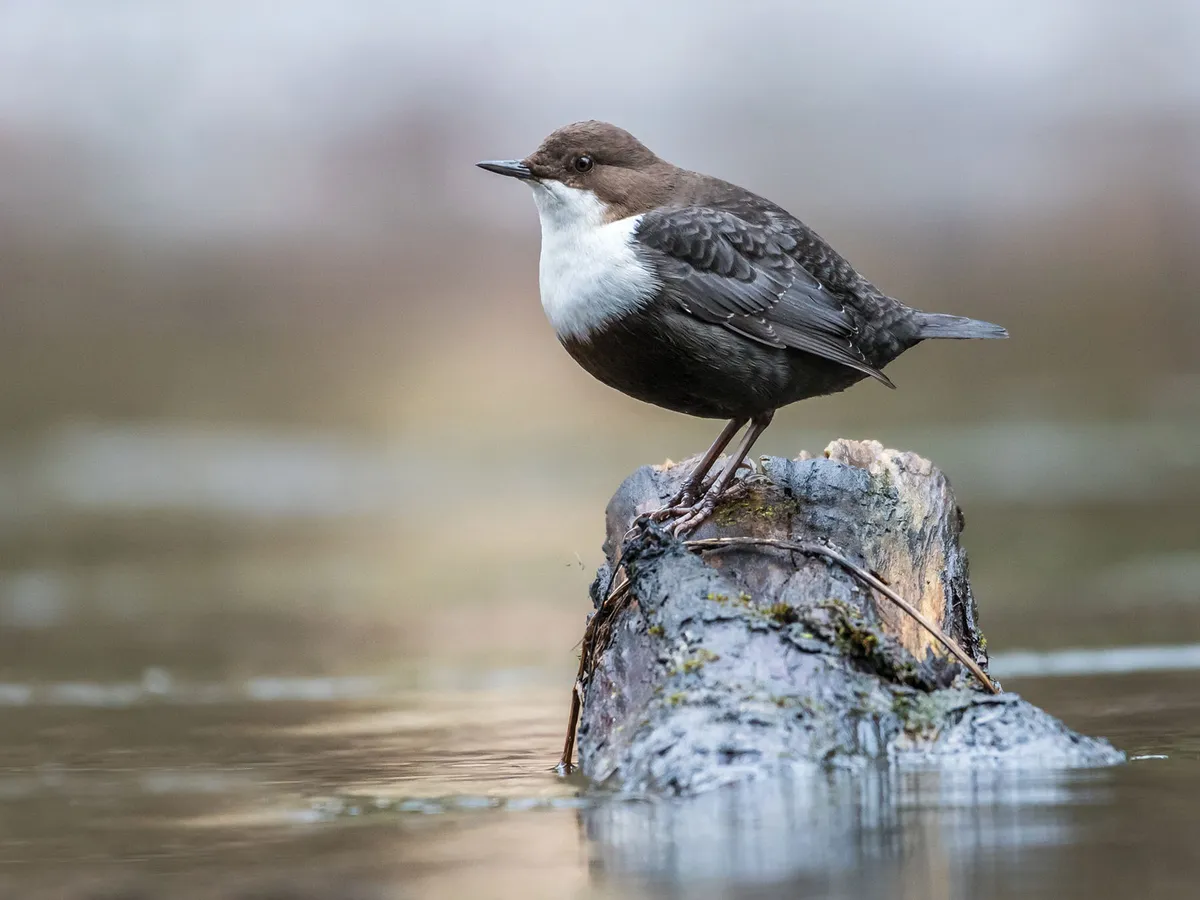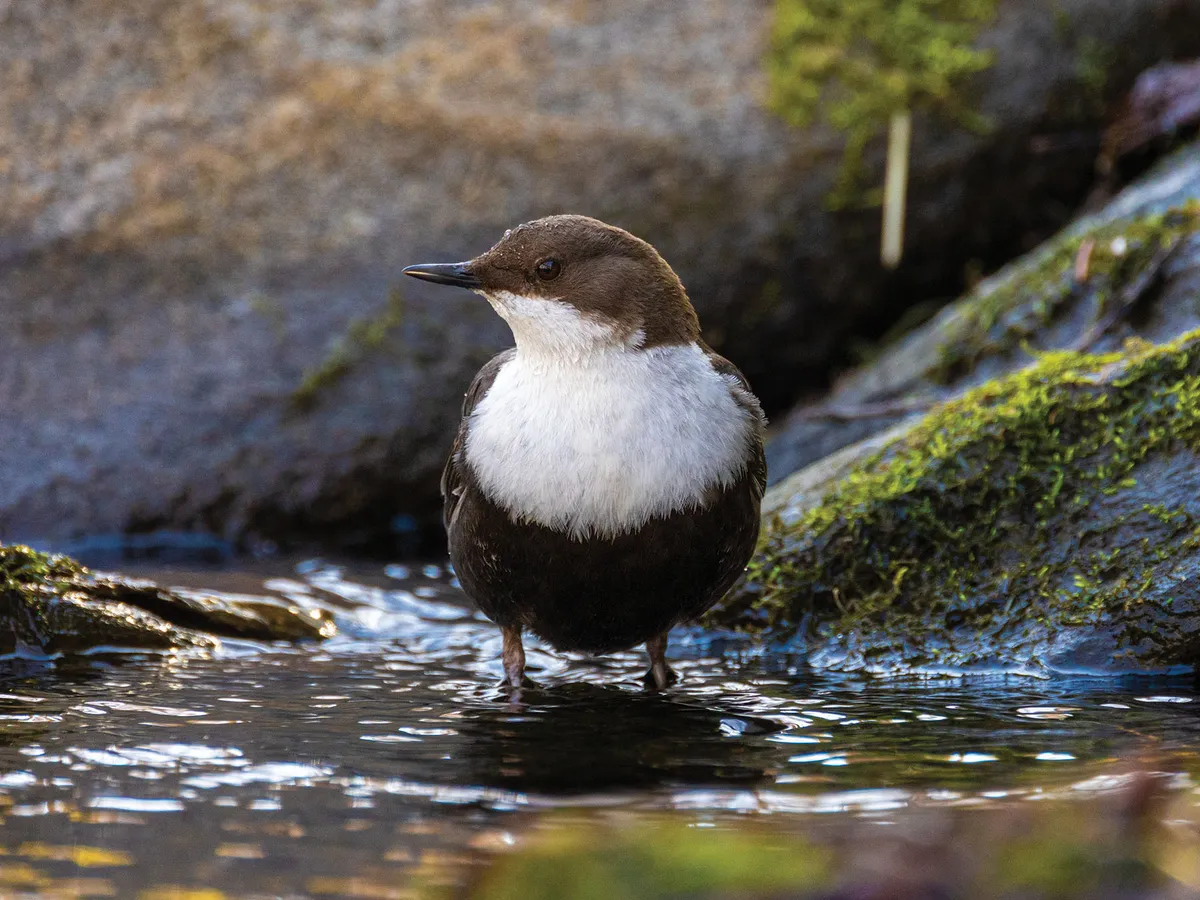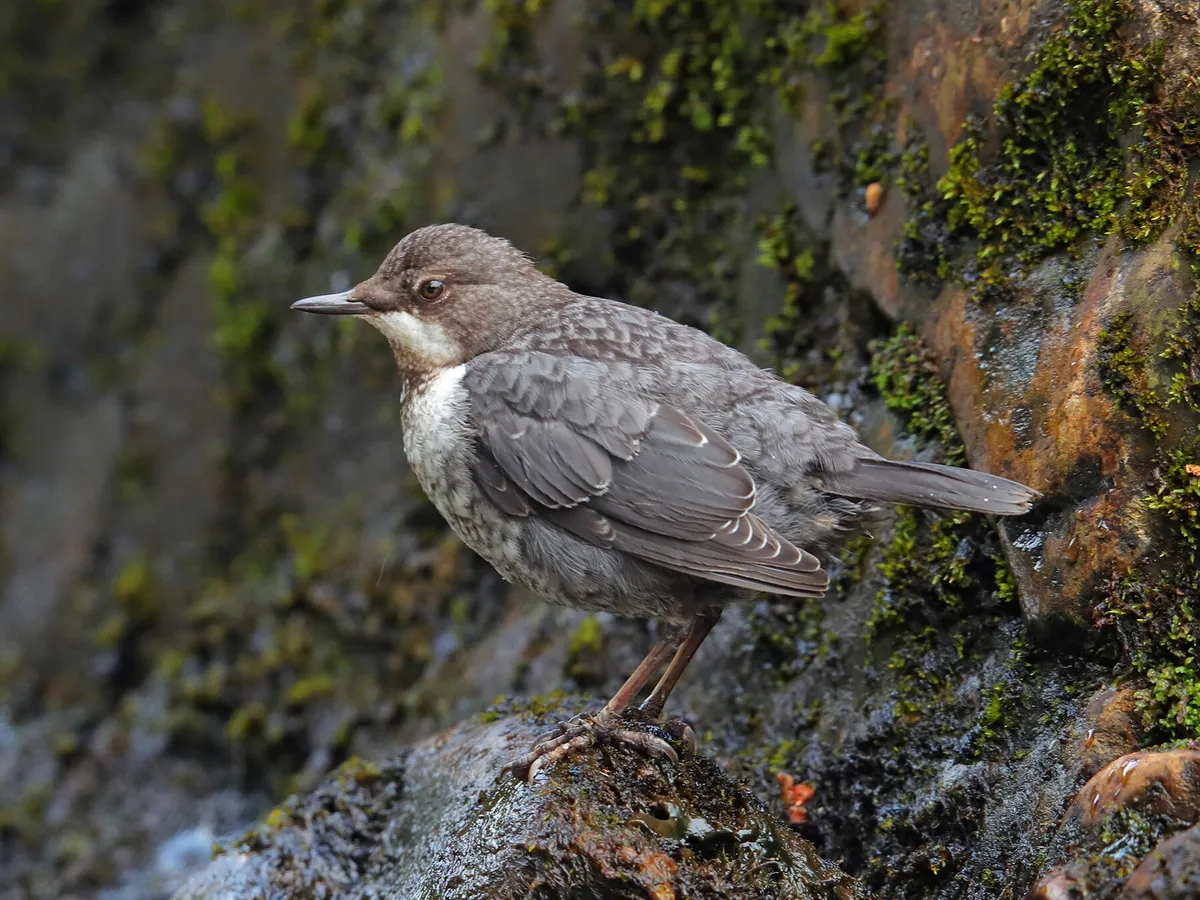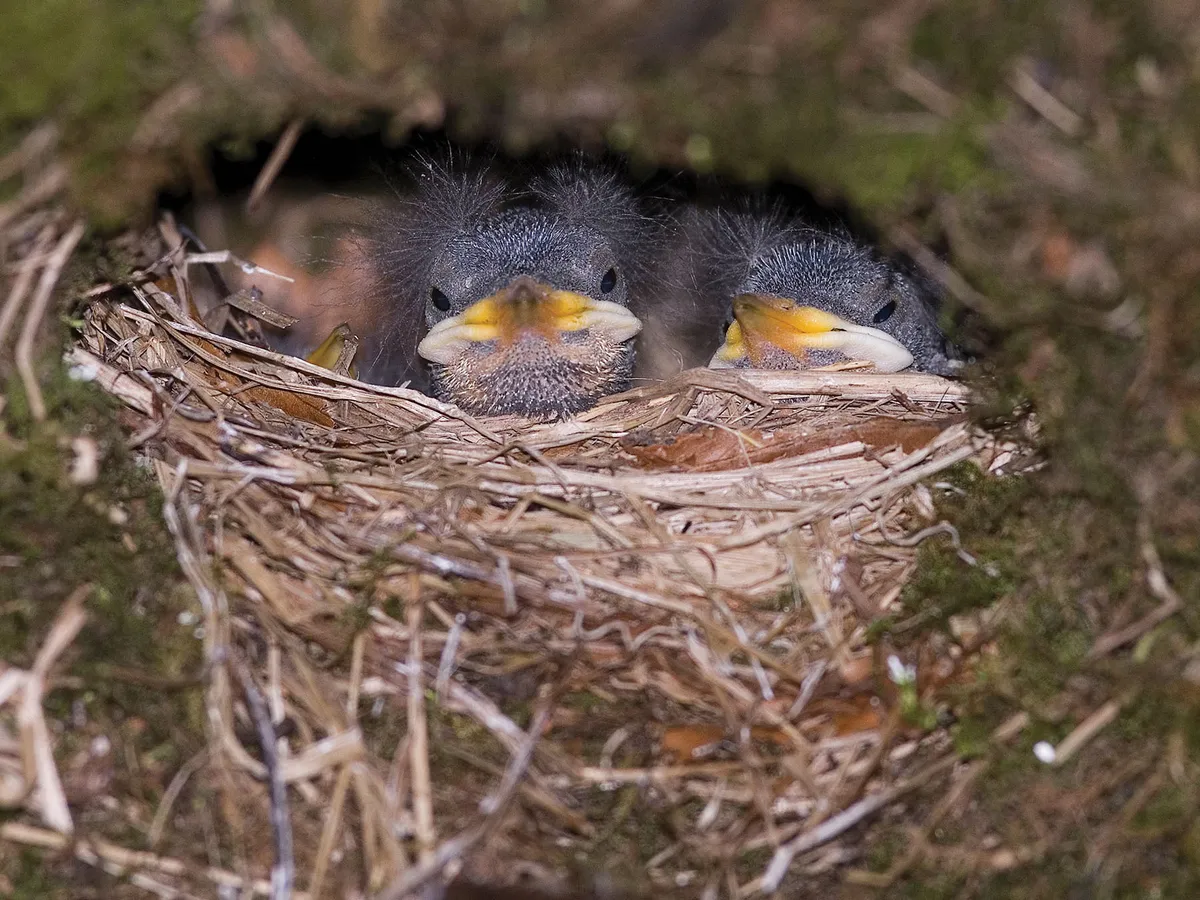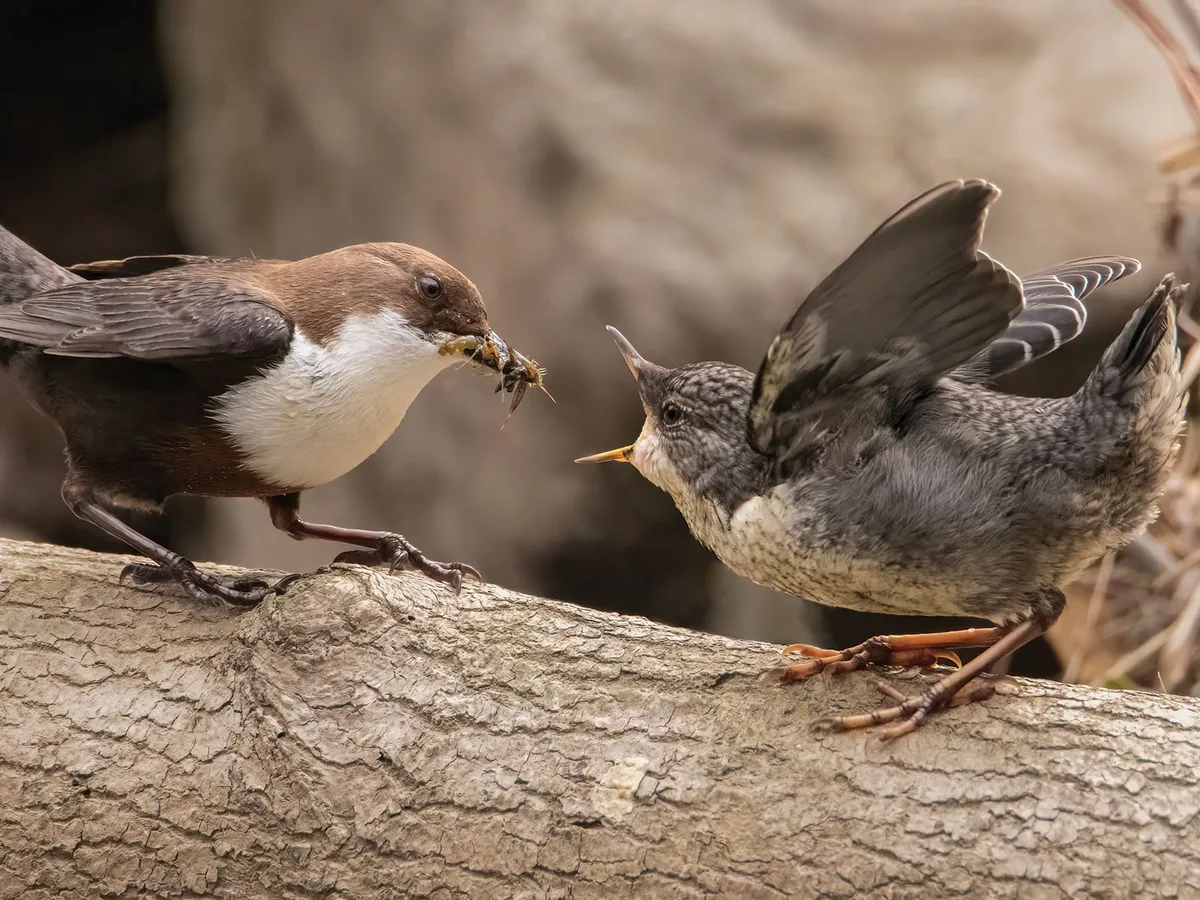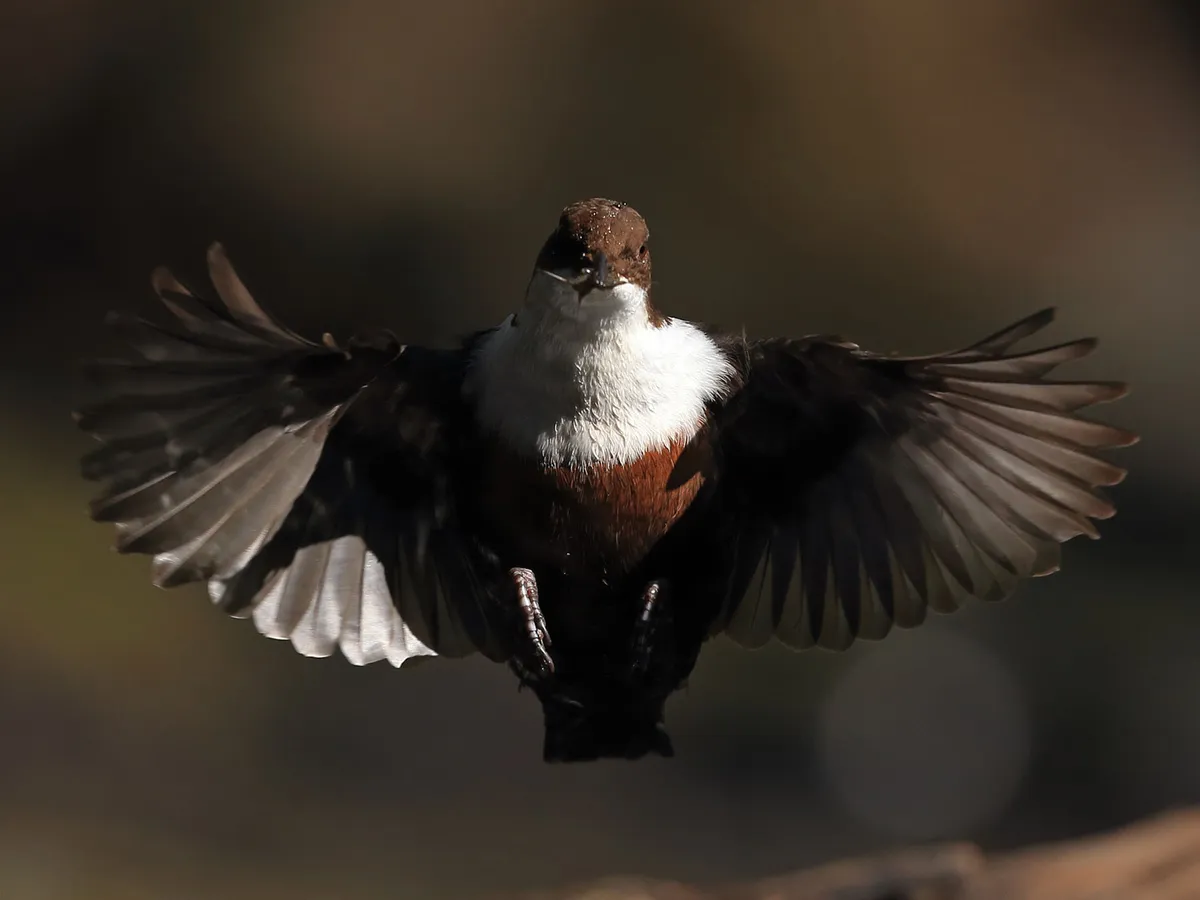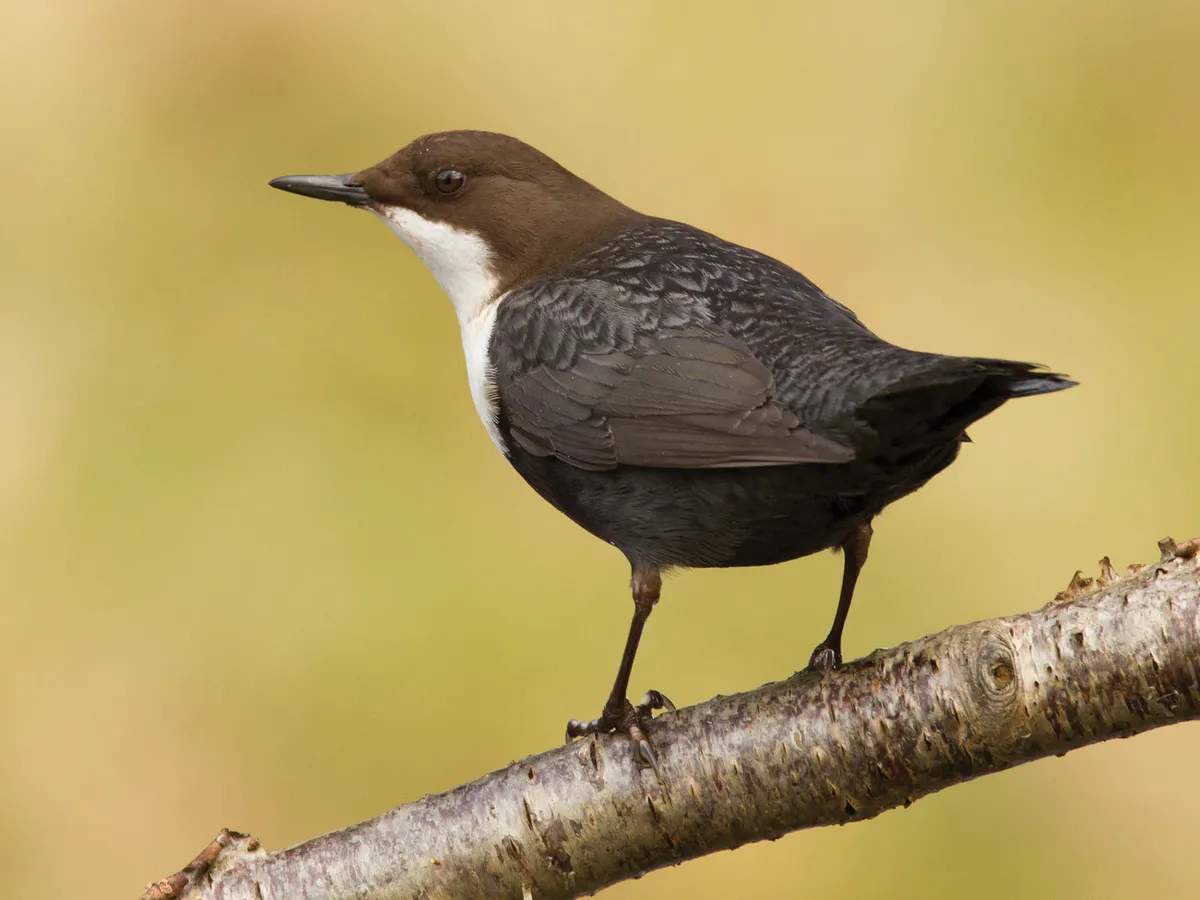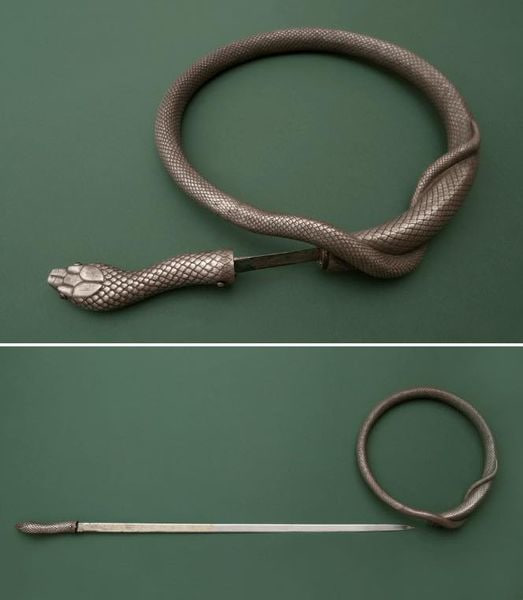Appearance & Identification
The White-throated Dipper is a distinctive bird, easily identified by its appearance and habits.
What do Dippers look like?
How big are Dippers?
Dippers are stout little birds, slightly smaller but more rotund than the Starling.
Length
Weight
Wingspan
Adult Dippers have a wingspan of 25 – 30 centimetres.
Close up of a Dipper with freshly caught prey in its beak
Calls & Sounds
Dippers call loudly to carry above the often noisy sound of the streams where they live.
What sound does a Dipper make?
Diet
What do Dippers eat?
What do Dipper chicks eat?
Habitat & Distribution
What is the habitat of a Dipper?
What is the range of a Dipper?
Where do Dippers live?
You’re best chance of spotting Dippers is along streams
How rare are Dippers?
Where can you see Dippers in the UK?
Signs and spotting tips
Lifespan & Predation
How long do Dippers live?
What are the predators of Dippers?
Are Dippers protected?
Dippers are protected by the Wildlife and Countryside Act of 1981.
Are Dippers endangered?
Nesting & Breeding
Where do Dippers nest?
What do Dipper eggs look like?
Do Dippers mate for life?
Young White-throated Dipper chicks in the nest
Adult Dipper feeding a recently fledged juvenile
Behaviour
Dippers are unique and fascinating birds to observe, particularly as they forage for food.
Are Dippers aggressive?
Where do Dippers sleep at night?
Migration
Do Dippers migrate?
Are Dippers native to the UK?
Dippers are native to the United Kingdom.
Close up of a Dipper perched on a branch





